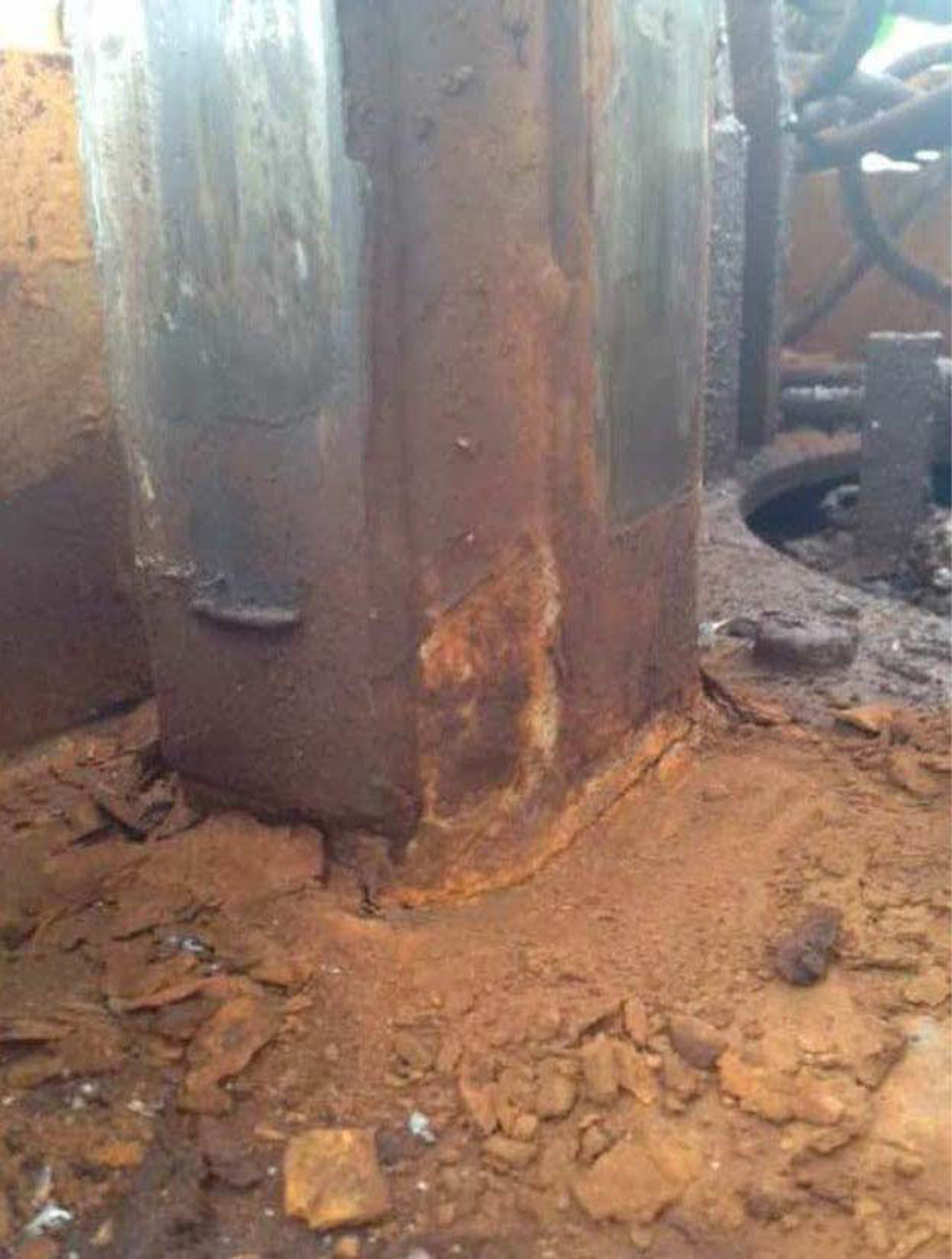Snubber failure
- Safety Flash
- Published on 10 April 2014
- Generated on 22 December 2025
- IMCA SF 05/14
- 2 minute read
Jump to:
A member has reported the discovery of a failure to a snubber on an ROV launch and recovery system.
What happened?
This was discovered during maintenance and annual load test of the ROV. When the tether management system (TMS) was separated from the ROV to facilitate maintenance work, this highlighted that the snubber did not appear to be sitting level. Upon investigation, it was found that the starboard snubber guide runner had detached from the snubber. Whilst this did not prevent the snubber function from operating, it did result in the snubber not maintaining its level when operating. On closer inspection, the port side snubber guide runner was found to have cracked welds also. The failed items were not associated with the load path and therefore there was no risk of dropped objects.

Cracked welds
The incident emphasises the need for thorough inspections during ‘routine’ maintenance tasks in order to capture any damage, fatigue or abnormalities.
Our member took the following corrective actions:
- Cleaned and prepared area for repair and welding.
- Close visual inspection of the other ROV onboard the vessel. No cracked welds were observed, but the welding was reinforced as a contingency.
- Added a six monthly visual inspection of the snubber assembly to company preventative maintenance system.
Related safety flashes
-
IMCA SF 09/13
18 June 2013
-
IMCA SF 08/07
24 August 2007
IMCA Safety Flashes summarise key safety matters and incidents, allowing lessons to be more easily learnt for the benefit of the entire offshore industry.
The effectiveness of the IMCA Safety Flash system depends on the industry sharing information and so avoiding repeat incidents. Incidents are classified according to IOGP's Life Saving Rules.
All information is anonymised or sanitised, as appropriate, and warnings for graphic content included where possible.
IMCA makes every effort to ensure both the accuracy and reliability of the information shared, but is not be liable for any guidance and/or recommendation and/or statement herein contained.
The information contained in this document does not fulfil or replace any individual's or Member's legal, regulatory or other duties or obligations in respect of their operations. Individuals and Members remain solely responsible for the safe, lawful and proper conduct of their operations.
Share your safety incidents with IMCA online. Sign-up to receive Safety Flashes straight to your email.